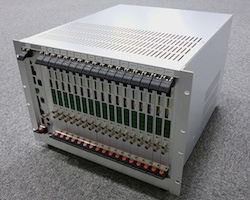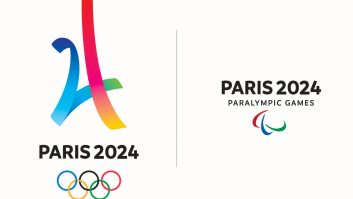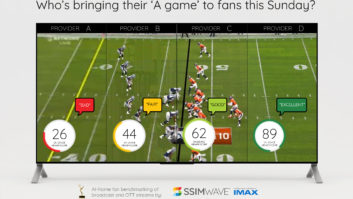
NHK and Mitsubishi Electric have developed what they claim is the world’s first HEVC (High-Efficiency Video Coding) encoder for 8K Ultra HD (pictured), dubbed Super Hi-Vision (SHV) by the Japanese.
HEVC, which offers roughly double the data compression of AVC and about four times that of the MPEG-2 standard currently employed for digital HDTV broadcasting, is set to be adopted as an international standard this year.
The high-volume SHV images are divided into 17 horizontal rows. The parallel processing of these rows makes it possible to achieve realtime coding of SHV images. The deterioration of picture quality at the row boundaries has been lessened by having rows share data concerning the speed and direction of moving objects.
NHK and Mitsubishi Electric Corporation are pursuing research and development of realtime coding of the 120Hz frame frequency of SHV.
The HEVC video coding divides a frame into small blocks (referred to as macroblocks) and the prediction and transformation coding of the images is conducted in each one. HEVC offers variable blocks that can handle up to 64×64 pixels, changing the size according to texture, while AVC has relied on a fixed macroblock size of 16×16 pixels. This allows it to achieve both high compression and high resolution.
The new encoder divides the SHV into 17 rows made up of 7,680 x 256 pixels. The coding in each of the rows is processed simultaneously. Data in each row is shared with the row immediately above and below, thereby lessening the deterioration in picture quality that occurs at the row boundaries.
By Adrian Pennington
www.mitsubishielectric.com
www.nhk.or.jp/digital/en/superhivision/






